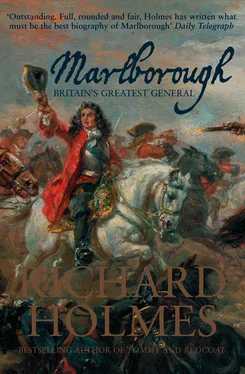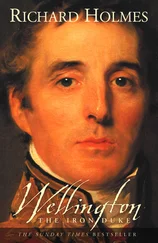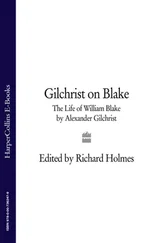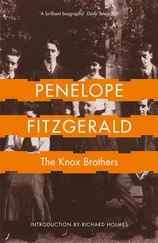There is enough symbolism to keep costume historians busily engaged for years. Gentlemen advertise their status by wearing swords, the slim, straight-bladed small sword in town and the stubbier hunting sword in the country. Races at Newmarket, then the only major national meeting, were an exception, for folk of all classes met on equal terms, turning out ‘suitable to the humour and design of the place for horse sports’, with nobody wearing swords. Spurs were important even if there was no evidence of a horse, for they showed that although the sitter might not be riding at the time, he could vault into the saddle at a moment’s notice. Not for nothing did the Latin inscriptions on gentry’s tombstones style a knight as equitus and a gentleman as armiger. In Charles II’s time red shoe-heels – a fashion borrowed, like so much else, from France – suggested noble rank, and the fashion spread so that officers of the Restoration army were as identifiable by their bright heels as their great-grandsons were to be by their epaulettes. The greatest officers of state, like the lord treasurer and secretary of state, carried thin white staffs of office. Sidney, Earl Godolphin, had his made short enough to be carried in a sedan chair, while the Earl of Rochester had his, of the longer variety, carried by a bareheaded footman to allay any doubts about the distinction of his chair’s occupant.
A portrait of Sarah, Duchess of Marlborough painted in about 1700 had a gold key added to its waist in 1702. In the interim Sarah had become keeper of the privy purse to the new queen, Anne, and the key confirms the status that her expression already suggests: she is a woman whose beauty is matched, at last, by her wealth and influence. And so pigment is splashed across canvas. Mouths curve like cupid’s bow, dogs stare admiringly at masters, steeds curvet without apparent inconvenience to riders, and occasionally, like extras in a drama, lesser mortals gather slain game or ply musket and bayonet amidst the background smoke.
None of this is a great deal of help to historians. Even court artists in England, it is true, could rarely disguise that bulbous blue-eyed, faintly irascible expression that characterised the Hanoverians, any more than their colleagues in Vienna could do much with the Hapsburg jaw. However, artists seldom get us beyond polite generalities. Portraits of Prince Eugène of Savoy-Carignan, Marlborough’s great collaborator, give no real sense that he was widely regarded as one of the ugliest men of his age, and almost always had his mouth slightly open. Louis XIV, for all his sneer of cold command, was five feet five inches tall, a full five inches taller than Charles I but an inch and a half shorter than William of Orange – who was four inches shorter than his wife Mary. William himself was, if you will forgive the phrase, no oil painting: he was thin and somewhat hunchbacked, and his face, already striving to accommodate a prominent nose, was heavily pockmarked.
While artists were happy enough to use their skills to reflect status and lineage and to hint at accomplishments and aspirations, in the main they present us with a great number of plump-faced, well-to-do gentlemen in wigs, accompanied by ladies perhaps too generously built for modern taste. Charles II’s mistresses were generally Junoesque but pretty, while James II’s were as substantial, but so very, very plain that Charles quipped that they had been imposed upon his brother by his confessor as a penance. Sir Peter Lely’s portraits, however, make them look so alike that even contemporaries complained:
Sir Peter Lely when he had painted the Duchess of Cleveland’s picture, he put something of Cleveland’s face as her languishing eyes into every picture, so that all his pictures had an air of one another, and the eyes were sleepy alike. So that Mr Walker the painter said Lely’s pictures were all brothers and sisters. 27
At one level, the barrier that portraiture interposes between us and Marlborough’s age is a useful corrective. Philip Guedalla, whose books did so much to arouse my passion for history, wrote of the world ‘spinning down the long groove of the eighteenth century’. How wrong he was. The world does not, so to speak, change step as a new century appears, and there is rarely a well-oiled hinge between one epoch and another. Marlborough was in many ways a creature of the seventeenth century, profoundly marked by his family’s experience of the Civil War. But his thoughts and character were forming at just the time that the spiritual and political convictions that had made the war possible were changing. Christianity, as Christopher Wren’s light and airy churches testify, was becoming more rational and less constricting. The execution of Charles I on the one hand, and the Restoration of his son on the other, left both royalists and radicals aware that God’s favour could prove all too transient. Science was fast becoming secularised, and a series of major discoveries, starting with Harvey’s work on the circulation of the blood and continuing with the ideas of Newton, Boyle and Hooke, began to replace old mysteries with new rationalism.
This science, however, had yet to transform the economy. Marlborough died while his country was experiencing the first birth-pangs of the Industrial Revolution. The road system he knew would have been familiar to his Tudor ancestors: York and Exeter were still over three days’ travel from London. John Evelyn’s house at Wotton, near Guildford in Surrey, was twenty-six miles from London but was ‘so securely placed as if it were 100’. The first turnpike (essentially a toll road) was established in 1663, and there were only seven turnpikes by 1700: the great explosion did not come till after 1750. The intrepid Celia Fiennes reported in 1698 that her route around England ‘was in many places full of holes, though it is served by a bar at which passengers pay a penny a horse to the maintaining of the way’. John Byng, writing a century later, mused:
I am just old enough to remember turnpike roads, few and bad; and when travelling was slow, difficult and, in carriages, dangerous … In the days of bad roads the country could not be stripped of its timber or despoiled of its honesty, cheapness, ancient customs and civility; every gentleman, then, was bowed to with reverence, and ‘A good morning to you, master. Good evening. Good journey to you, sir,’ were always presented; with every old-fashioned wish, and compliment of the season …
Even till lately, there were hollow ways from Grays Inn Lane to Kentish Town, and a long deep water to be waded through from Mother red-Caps in the road to Highgate. All the Hertfordshire roads were deep ravines. 28
The first breaths of the wind of change could already be felt. The swash and buckle of Restoration drama was light years away from the masques of the early part of the century. The witty and elegant essays of Joseph Addison and Richard Steele are, suggests one editor, like old silver, whose fashion is still well regarded even if its weight is negligible. 29 Political thought was also changing fast. In 1690 John Locke affirmed that ‘All men are naturally in a state of perfect freedom to order their actions and dispose of their possessions and persons as they think fit without asking the leave or depending upon the will of any man.’ Locke could get away with this in Britain, but these were dangerous ideas elsewhere: the Enlightenment was still two generations away, and few contemporary European monarchs would have tolerated such words.
For some historians the Glorious Revolution of 1688, which saw James II replaced by William and Mary, is the real turning point, although it accomplished less than many contemporaries hoped. For others, though, the real break comes with the Hanoverian succession, which brought George I bloodlessly to the throne in 1714, even though Jacobitism was to remain a threat until the defeat of Charles Edward Stuart, James’s grandson the ‘Young Pretender’, in 1745–46. Were our focus here European rather than more narrowly British then we might see the 1713 Treaty of Utrecht, which ended the War of Spanish Succession, and with it the more extravagant ambitions of Louis XIV, as a sharp bend in history’s long and rutted road.
Читать дальше












